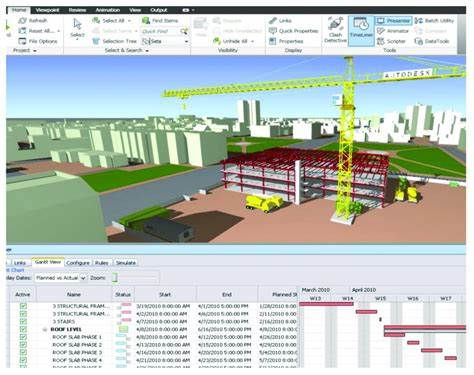Enhancing Construction Planning & Scheduling Using BIM, WBS, IDS, and Model-Based Tools
- Loyiso Toyi BSc Eng (Civl)

- Apr 13
- 3 min read
Updated: May 3

The delivery of modern healthcare facilities demands precision, speed, and data-driven decision-making. In an era where Building Information Modeling (BIM) has matured from 3D modeling to full lifecycle integration, construction planning and scheduling are being radically transformed. This article presents a holistic workflow for hospital projects, integrating BIM-based construction scheduling, Uniclass 2015 classification, Civil 3D Property Sets, Information Delivery Specifications (IDS), and Solibri/Power BI-based rule checks—culminating in accurate, standards-based COBie spreadsheet outputs.
Building the Foundation: BIM-based Construction Planning and Scheduling
Traditionally, construction schedules and models existed in silos. BIM bridges this gap by linking model elements directly to activities, locations, and classifications. In the case of hospital projects—where coordination across architectural, structural, and MEP systems is critical—this integrated scheduling approach enhances accuracy and visibility.
Key Elements of BIM-based Scheduling:
Element Identity: Unique IDs link model elements with schedule tasks.
Uniclass 2015 Classification: Standardized categorization supports consistency and cross-tool compatibility.
Location Context: Zone- and level-based segmentation aids in 4D simulation and phased delivery.
Work Packaging: Logical grouping of tasks enables lean planning and subcontractor coordination.
This approach not only improves visualization (especially with 4D tools like Navisworks) but creates a single source of truth from design through handover.
Why Classify? The Role of Uniclass 2015
Uniclass 2015 provides a standardized structure to classify elements, systems, spaces, and products in a way that aligns with modern information management practices. When used consistently across the BIM model and construction schedule, Uniclass enables:
Precise model filtering
Improved rule-based checking in Solibri
Enhanced data mapping for COBie
Clean analytics in Power BI
Think of it as the glue that holds data consistency together across disciplines and tools.
Quality Assurance with Solibri and Rule Checks
To maintain high data and geometry standards across all work packages, Solibri Office is leveraged to run WBS-driven rule checks. Here’s how:
🧱 Model classification is set up based on WBS codes and location zones.
✅ Rule sets are applied to specific work packages (e.g., Doors, HVAC, Drainage).
📋 Checks include geometry completeness, fire rating verification, space clearances, and COBie field validation.
Using custom rule filters, you can zero in on just the systems being installed during a given phase—making Solibri not just a quality gatekeeper, but a construction partner.
Bringing Civil 3D Into the Fold
Infrastructure elements—such as roads, utilities, and external drainage—are captured in Civil 3D and enhanced with Property Sets for downstream use. These attributes are exported to IFC and integrated into the larger construction and quality control workflows, ensuring:
Civil tasks are scheduled and visualized like building systems
Underground works are clash-checked with MEP layouts
Compliance is validated alongside architectural elements
Autodesk Navisworks: 4D Simulation and Coordination
Navisworks adds the time dimension and powerful visual coordination:
Link construction tasks to model elements for 4D sequencing
Detect clashes between MEP and structural systems
Visualize construction by work package or location
Track progress using planned vs actual comparisons
Navisworks helps align models with the construction reality—enhancing communication and planning.
Visualize It: Power BI Dashboards
A well-structured schedule and model deserve equally intelligent visuals. Power BI helps teams track progress, identify risks, and make data-backed decisions.
Key visuals in the dashboard:
📅 Gantt-style activity timeline by WBS or Uniclass group
🌍 Location heatmaps (Zone A, ICU, Rooftop Plant)
⚙️ Filterable KPIs by discipline, contractor, or trade
🚦 Delay tracking and issue flags based on real-time inputs
You can even stream data directly from models via platforms like Speckle for real-time insight.
The End Game: COBie Spreadsheets, Delivered Right
All this structured data and workflow planning pays off in handover. Using IDS and Solibri, we ensure that all required COBie fields are validated and complete before export.
🏷 Components are tagged with Uniclass codes and WBS IDs
🔌 Systems are grouped by trade and checked for completeness
🏢 Spaces are verified for type, dimensions, and purpose
🛠 Attributes are confirmed across installation dates, warranties, and contact info
The result? A COBie dataset that’s not only compliant—but useful for facility managers on day one.
Conclusion
This data-driven, standards-aligned workflow transforms construction delivery:
🚀 Faster execution with work packages and phased sequencing
📏 Higher accuracy with classification and rule-based checks
📊 Real-time insights with Power BI integration
🧾 Clean, structured COBie outputs for lifecycle management
For healthcare facilities, where quality, timing, and operational readiness are non-negotiable, this approach is a must-have.
Interested in bringing this workflow to your next project?



Comments